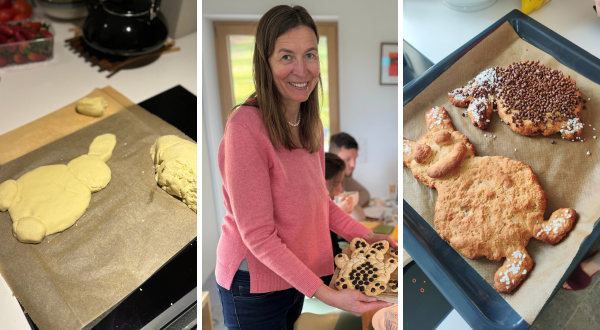
Spring traditions at Easter
We appreciate rituals for our well-being and quality of life. Examples of rituals can be our personal habits such as drinking coffee in the morning, meditating daily, or celebrating certain holidays. Wedding ceremonies and birthday celebrations also consist of a set of customs. In an often uncertain and rapidly changing world, rituals and traditions offer stability and predictability, and with them, the anticipation of an event. They connect us as humans and create a sense of community and belonging. They can strengthen social bonds and foster a sense of solidarity within a group or community.
Especially during the holidays, we enjoy many customs that have developed over years or even centuries. At Easter, Easter customs are an opportunity to celebrate spring, symbolize the return of life, and share the joy and hope of this season with family and friends. These include, for example:
- Egg coloring and Easter egg hunts: Egg coloring is one of the most well-known Easter traditions. Children often search for hidden Easter eggs in the house or garden, which is a popular game.
- Easter Bunny: The Easter Bunny is a symbol of Easter, especially in many Western countries. He traditionally brings Easter eggs and sweets to children by hiding them in gardens or houses.
- Easter meals: Many families gather for a festive Easter meal, which often includes traditional dishes such as lamb, ham, fish, or other regional specialties.
- Easter fires: In some regions, Easter fires are lit to welcome spring and symbolically drive away the darkness of winter.
- Easter decorations: Decorating houses, churches and public places with Easter decorations such as daffodils, rabbit figures and spring flowers is widespread.
The Ryan's have an Easter bread every year
At the Ryan's, Easter has been a time of family traditions and sweet treats for over 20 years. One of these traditions is baking Easter bunnies and other Easter figures in the form of delicious Easter bread. My children always look forward to this particularly fondly, and every year each of my three daughters shapes her own bunny from the fluffy yeast dough.
Even as grown-up children, they still enjoy baking and, of course, eating together. Over the years, we have created many bunnies - from cute Easter bunny faces to standing or sitting bunnies and even bunnies with long ears. Sometimes we even bake cute Easter eggs to round out the variety of our Easter creations. And the ingredients have also changed over the years. Guitard chocolate chips are still very popular for giving the bunnies faces and contours. Every now and then, the delicious chocolate chips are replaced with cranberries. But vanilla extract or vanilla paste are a must-have ingredient. 
 |
 |
The individual ingredients are adapted to suit your dietary requirements. For example, the butter can be replaced with margarine or avocado oil, making the bunny lactose-free or even vegan. Gluten-free flour can also be used instead of wheat or spelt flour. Vegan milk alternatives are becoming more and more popular as a substitute for cow's milk. And then there's the question of what we eat with it? Well, American Heritage has lots of great jams and fruit spreads that are a must-have on our breakfast table - Wild Maine Blueberry Jam .......Cinnamon Apple Jelly,,,,,, and, very un-American, Nutella or an alternative nut spread.
Discover our bestselling jams!

Wild Maine Blueberry Jam from Stonewall Kitchen
For us at Ryan's, baking our delicious Easter bread is not only a culinary tradition, but also an opportunity to spend time together, create memories, and share the joy of Easter. It's a wonderful way to spend time as a family and celebrate the joys of spring. We'd like to share this joy with you, so we're sharing our beloved family recipe:
We take:
500 g wheat or spelt flour
42 g fresh yeast
1/4 l lukewarm milk or a plant-based substitute
50 g sugar
1 pinch of salt
75 g butter or margarine
1 egg or egg substitute
1 tsp vanilla extract
and milk for spreading and chocolate chips for decorating
Crumble the yeast packet into the flour and add a little lukewarm milk. Mix everything together and let the dough rest, covered, for 15 minutes. Then sprinkle the sugar and salt around the edges and pour in the remaining milk, melted butter, and beaten egg. Knead the dough into a smooth dough and let it rise for another 30 minutes. Roll out the dough into a 1 cm thick sheet and cut it into bunnies, Easter eggs, or other shapes. Decorate the bunnies with chocolate chips or cranberries. Brush the yeast molds with milk and bake them at 200°C until golden brown.
Our favorite products for this recipe:
Overall, Easter baking is not just a culinary tradition for my family and me, but also a time of shared experiences and joy. Every year, we look forward to treating our loved ones to our delicious Easter treats and creating new memories. I hope you too can discover the joy of Easter baking and that these recipes bring you as much joy and enjoyment as they do us. Happy Easter and happy baking!
Enjoy,
your Sabine Ryan







